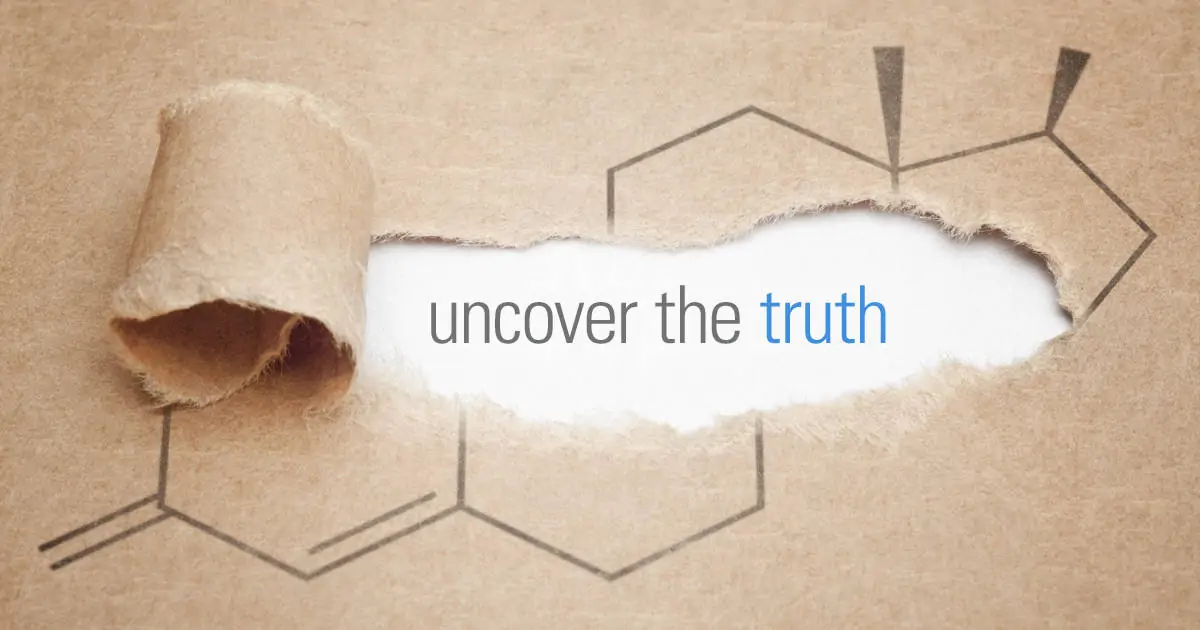Recent headlines have sought to erupt fear among the thousands of men and women who have sought solace from aging with testosterone therapy. The Twitterverse has lit up the scene with statements wrought with hashtags, spurring a debate among healthcare experts and patients—is testosterone therapy safe? With all the myths about testosterone therapy flying around cyberspace, it’s no surprise you may be feeling apprehensive about pursuing therapy. But before you give up on your quest toward feeling more like your old self again, learn the real truth about testosterone therapy, as the biostation™ busts the top five myths about testosterone therapy.
Myth #1: Testosterone therapy is illegal.
There is a lot of controversy over the use of testosterone therapy in professional sports contributing to the myth that it’s illegal. While athletes who need the therapy for medical reasons have to jump substantial hurdles to keep their spot on the playing field and get the treatment they need, you don’t have to fret. Testosterone therapy is not illegal and can be a very effective treatment for a variety of medical conditions, including those associated with aging.
Myth #2: Testosterone therapy is a steroid, therefore it is dangerous.
It is true that anabolic steroids are derived from the hormone testosterone. But, there are other components to anabolic steroids that are not found in testosterone therapy. Bioidentical testosterone used for testosterone therapy is derived from plant sources and compounded to identically mimic the testosterone made by the body. Additional chemicals, boosters, and other unknown substances that are found in illegal substances, like steroids, are not part of testosterone therapy treatments from a certified medical doctor.
Myth #3: Testosterone therapy will cause me to become violent or “out of control.”
Testosterone therapy is intended for men and women with low levels of testosterone or whose bodies are not producing testosterone. Your testosterone levels will be carefully assessed prior to treatment to determine if it is needed. If testosterone therapy is deemed a treatment option, your doctor will carefully monitor your hormone levels throughout treatment to ensure that balance is achieved and maintained. Careful monitoring and care from a medical doctor trained in hormone therapy ensures that your levels stay balanced, eliminating fears associated with excess testosterone, such as violent moods.
Myth #4: Testosterone therapy causes prostate cancer.
There is a lot of controversy surrounding the impact of testosterone therapy on prostate health. As with any other treatment or therapy, it is important to seek the expertise of a certified medical doctor who specializes in hormone replacement therapy. He or she will carefully assess your need for the treatment and review your medical history. There is no conclusive evidence linking testosterone therapy to the development of prostate cancer; however, patients with a history of prostate disease are generally not prescribed testosterone therapy.
Myth #5: Testosterone therapy causes baldness.
This rumor is based on the fact that hair loss is influenced by the transformation of testosterone into dihydrotestosterone (DHT). Testosterone converts into DHT due to an enzyme called 5-alpha reductase. When combined with a hereditary predisposition for hair loss, the result is often baldness or thinning hair. But, testosterone therapy is still an option, even for men with a genetic predisposition for baldness. Choosing a hormone specialist who does advanced testing can ensure that your testosterone therapy includes a supplement regimen that can reduce DHT.
The key to testosterone therapy that is safe, effective, and without side effects, is choosing to receive treatment from a certified medical professional. At the biostation, the expert team is led by board-certified cardiologist and certified anti-aging physician, Martin G. Bloom, M.D. Dr. Bloom and his team work extensively to deliver advanced testing and comprehensive treatment customized to suit each patient’s individual needs and lifestyle.
 East Delray, Florida
East Delray, Florida West Delray, Florida
West Delray, Florida The Boca Raton, Florida
The Boca Raton, Florida Midtown Miami, Florida
Midtown Miami, Florida Carillon Wellness Resort
Carillon Wellness Resort  Williams Island
Williams Island  Midtown Tampa, Florida
Midtown Tampa, Florida Life Time
Life Time Grand Wailea
Grand Wailea  NOW OPEN
NOW OPEN  COMING SOON
COMING SOON 
